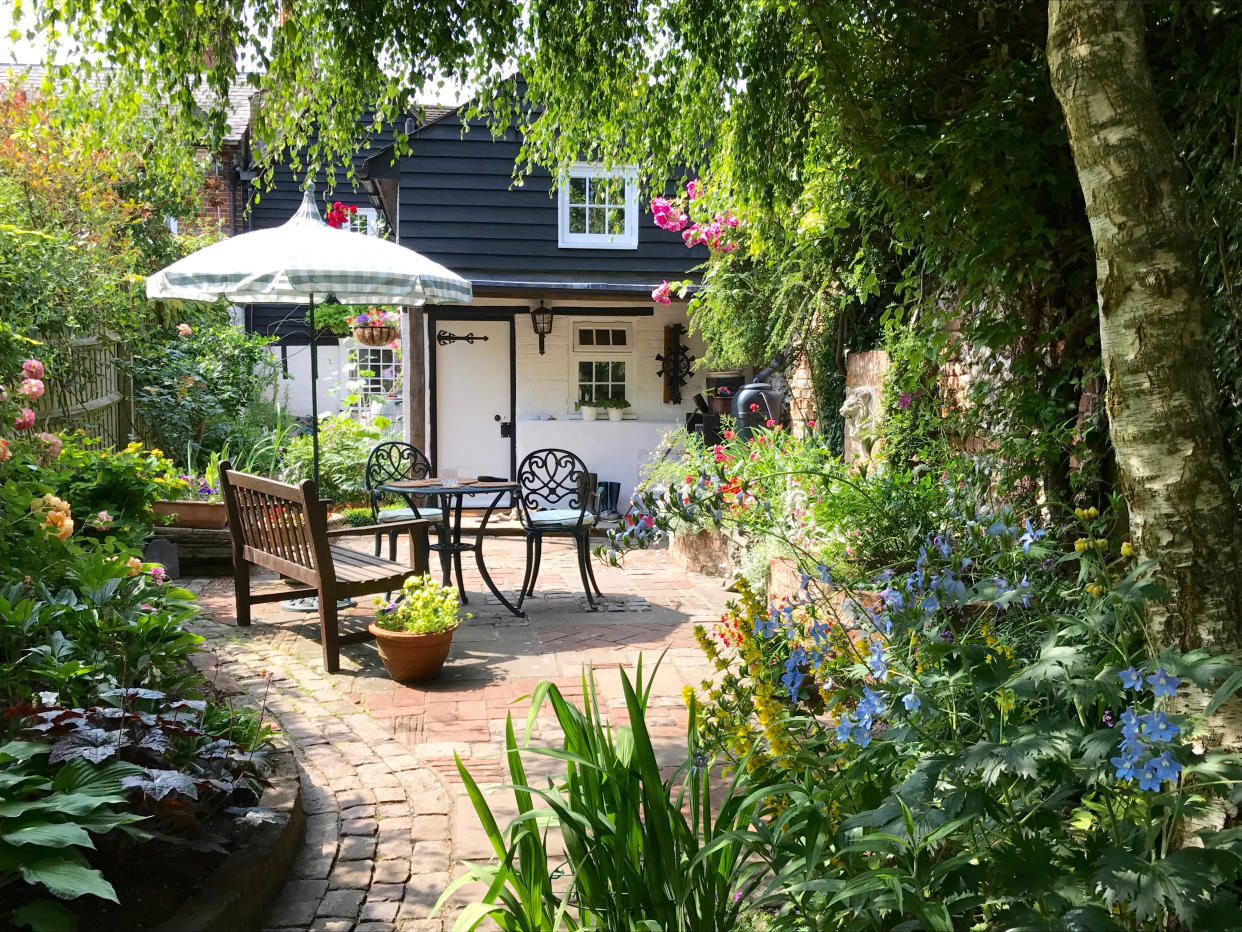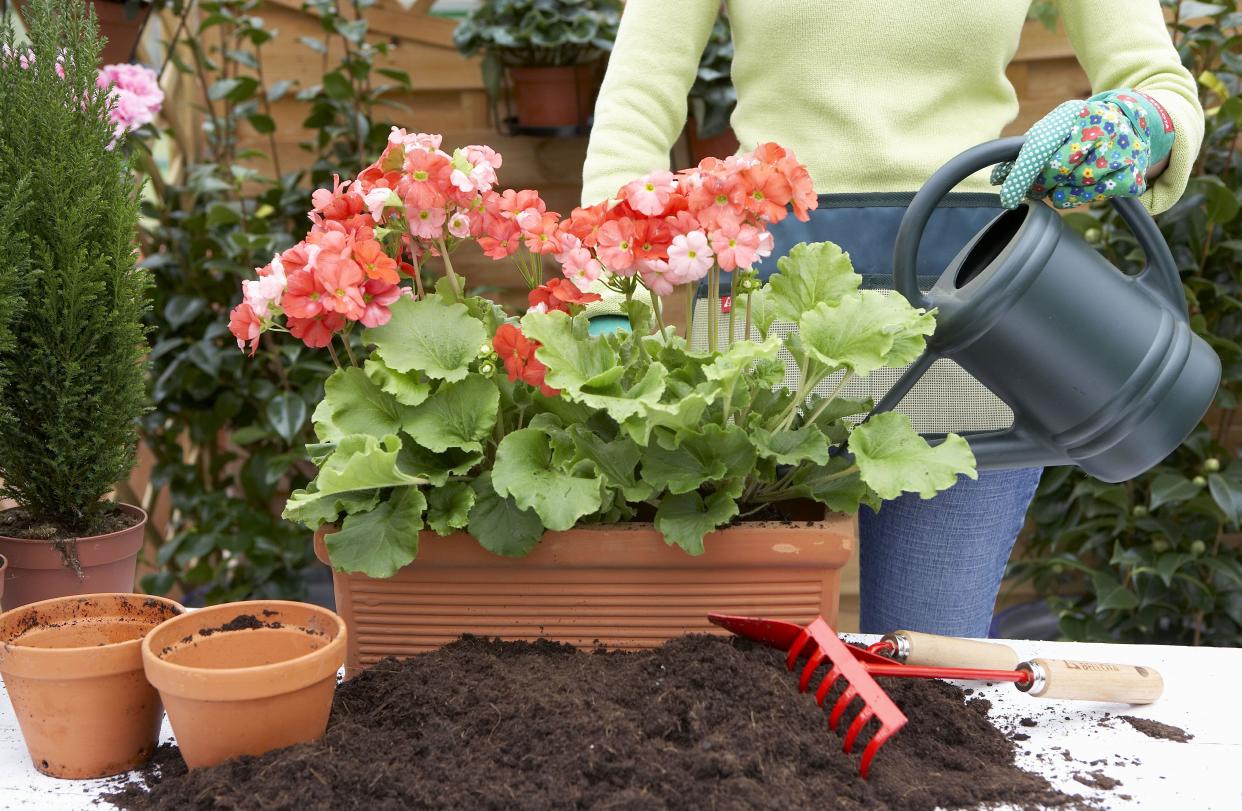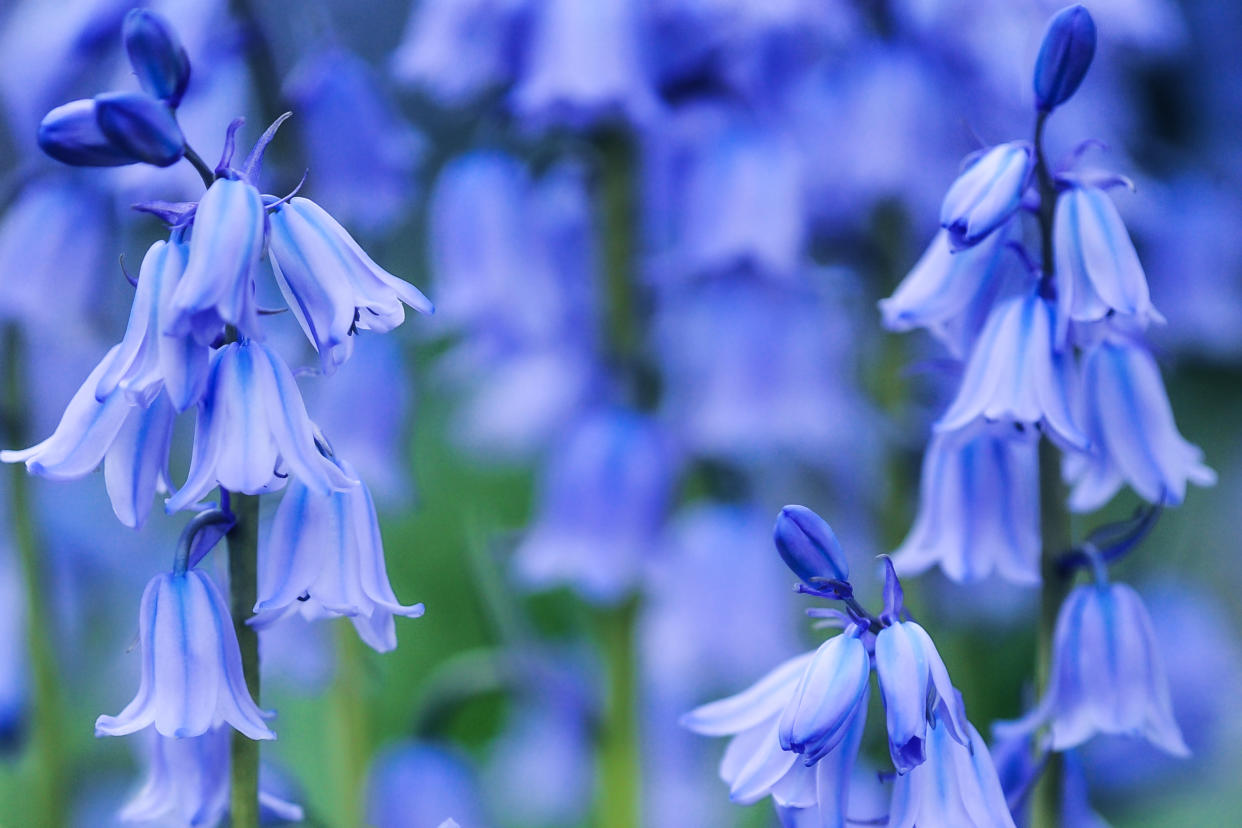What makes a high or low maintenance garden

Spring is the prime time when homes with impressive gardens pop up on Rightmove but, if you dream of some gorgeous outside space, whether it’s in the city, the suburbs or out in the country, it’s important to know how much work is involved in keeping a garden looking good.
Size isn’t a reliable indicator of maintenance – you could have several acres of fuss-free land, or a smaller garden that constantly needs working on. More important is the style of the garden and the plants you grow.
With many people opting to tend their garden themselves – both as a way to cut costs but also as a mindful exercise – we asked several gardening experts their advice on what makes a garden high and low maintenance.
High maintenance garden features
Rockeries and wide borders
The Merry Gardener Peter Merrywest says areas that attract weeds make for time-consuming upkeep.
“Weeding definitely is my no.1 highest maintenance job within a garden. That being said, I would say the rockery, stoney paths, block paving and wide empty borders are exceptionally high maintenance,” he says. “I would really aim to fill up the borders which will crowd out the weeds and reduce your weeding time.”
MT O’Donnell, publisher of Scotland Grows Magazine, agrees and suggests that bare soil should be filled with cover plants or, for even easier maintenance, wood chip. “Pack gaps in borders with sprawling ground cover plants like ajuga replans, saxifraga and stachys byzantina.
Read more: Top tips to invest in a property and the features that sell a home
"They will happily spread amongst the borders to help suppress weeds. Bare soil can also be mulched using bark chippings or gravel between plants, which saves on work because it helps prevent weeds growing and stops water evaporating.”
Tall hedges
While hedges are a popular choice for adding privacy and extra greenery, you need to choose your hedge type carefully. “People often plant leylandii as they provide good cover from neighbouring houses, but they grow very quickly and require trimming often otherwise they get very tall and overgrown,” flags Kendall Platt, The Mindful Gardening Coach.
Tall hedges need careful maintenance, and potentially a professional arborist, should they become too high for your gardener or yourself to tend to. Instead, choose low maintenance hedges, such as laurel, yew and English holly.
Pot plants
Pot plants might look a tempting prospect when you’re ambling round the garden centre and fancy treating yourself, but beware. They are dependent on a gardener to water and feed them regularly, making them more high maintenance than many of the larger plants in your flower beds. If you’re determined to have pot plants, think about what you’re going to put in them.

“Drought-tolerant options will reduce the amount of upkeep required, such as ornamental grasses, Mediterranean herbs, or Eryngium,” advises O’Donnell. “It is also worth considering what material the pot is made from; a terracotta pot, for example, will dry out much more quickly, and will require more watering than other materials. As a general rule, of thumb, big pots are easier to look after than small ones: the smaller the pot, the quicker it dries out and the more watering it will need.”
Large lawns
While large expanses of lawn mean less weeding, don’t underestimate the amount of upkeep that grass requires. “Using a robotic lawn mower and installing hard edging is one solution to cutting down the amount of time spent on lawn care, but this is not always a cost-effective solution for many gardeners,” says O’Donnell.
Read more: 10 ways to make a room feel more spacious
“Replacing the grass with creeping thyme, sedum, or heath pearlwort would require no cutting. Alternatively, you could reduce the size of your lawn and replace it with more flower beds, filled with low maintenance planting like ornamental grasses and evergreen shrubs.”
Difficult access
Whether you’ve got grass or flower beds, having a lawn that’s flat with easy access makes things much simpler. “An easy garden is one that is all on the same level with access to all areas, maybe over stones or a path,” says Katie Roberton, owner of Rare Bird Gardening and Outlandish Creations. “I spent part of last week in a rockery with a huge and prickly palm in the centre of it so that was definitely a hard garden to tend to. It’s difficult if there isn’t an easy way to get to the back to weed or if it’s on different levels or on a slope.”
Merrywest agrees, saying the hardest gardens are sloped or have multiple tiers to them.
High maintenance plants
It goes without saying that certain plants require more love and attention than others – so what should you avoid if you’re after a low maintenance garden? “I find peonies are quite high maintenance plants, you love them and talk to them and there are often no flowers for year after year, roses too and some azaleas,” says Roberton.
“Things that need to be saved from slugs and other pests: Hostas, delphiniums, strawberries, lettuce, cabbages,” says Platt. “Also, things that need pruning and regularly tieing into their supports: climbing roses, some clematis varieties, wisteria.”
Low maintenance garden features
Meadows
When it comes to low maintenance, you can’t get easier than a meadow. “Meadows can be a great way to keep the garden low maintenance. For example, I have a client that will leave the lawn to grow as a meadow with added wildflowers and just mow a curved path all the way through,” says Merrywest.
Platt warns that if you want a meadow that’s also aesthetically pleasing, you need to invest some time and money. “To get good growth of the flowers you first need to either lift up the lawn or scarify it significantly so that the wildflower seeds can take hold. This is a lot of work,” she says.
Read more: Lesser-known ways to save money on a property
“Then the seeds should be sown in a grid pattern to get good coverage which is painstaking. Lastly, once the wildflowers bloom, they look good for a few weeks and then they start to look very dry and crispy. At the end of the season the meadow needs cutting and the seed distributed by hand, a very laborious task.”
Woodland
An alternative to meadows is woodland, although you will need to give up a certain level of control. “If you have shaded areas under trees in your garden a woodland area would be a good low maintenance addition,” says Platt. “Woodland plants are used to spreading of their own accord with only Mother Nature’s guidance and little input from you. The only thing is you can’t be too choosy about where they spread to.”

If you haven’t got the space for a wood, why not opt for some carefully chosen trees instead? “Trees are generally low-maintenance plants, but some trees, such as fruit trees, will require annual pruning so are best avoided if you are time-poor in the garden,” says O’Donnell.
Perennial plants
These bloom year after year and, once in the ground, only need minimal supervision every season. “Perennial plants that only need dividing every three years, such as gems and astrantia, [are low maintenance]” says Platt.
“Geraniums and bulbs are very hardy and perennial which is useful, and they are so colourful,” adds Roberton.
Lavender
Another low maintenance plant is lavender, which also gives good coverage in beds that might be prone to weeds. “My absolute favourite is the classic lavender, but not just one or two. They look best when you have a whole border full, you get this amazing sea of purple when they flower. It's just magical. And super low maintenance, just one cut per year,” adds Merrywest.
Herbs and succulents
If you want a garden that you can use in your cooking too, you’ll be pleased to hear that herbs are among the lowest maintenance plants you can grow. “Sage, rosemary, lavender, and thyme require little maintenance, are drought-tolerant, continue to grow despite neglect, and can give you tasty additions to your larder,” says O’Donnell. “Succulents and sedum (now known as hylotelephium) can survive for periods without water, cope in hotter conditions, and will return for years to come.”
It’s important to remember that even low maintenance gardens need tending. As Platt puts it: “Creating a garden should be viewed as a journey, never as a one and done.”
Watch: How much money do I need to buy a house?


